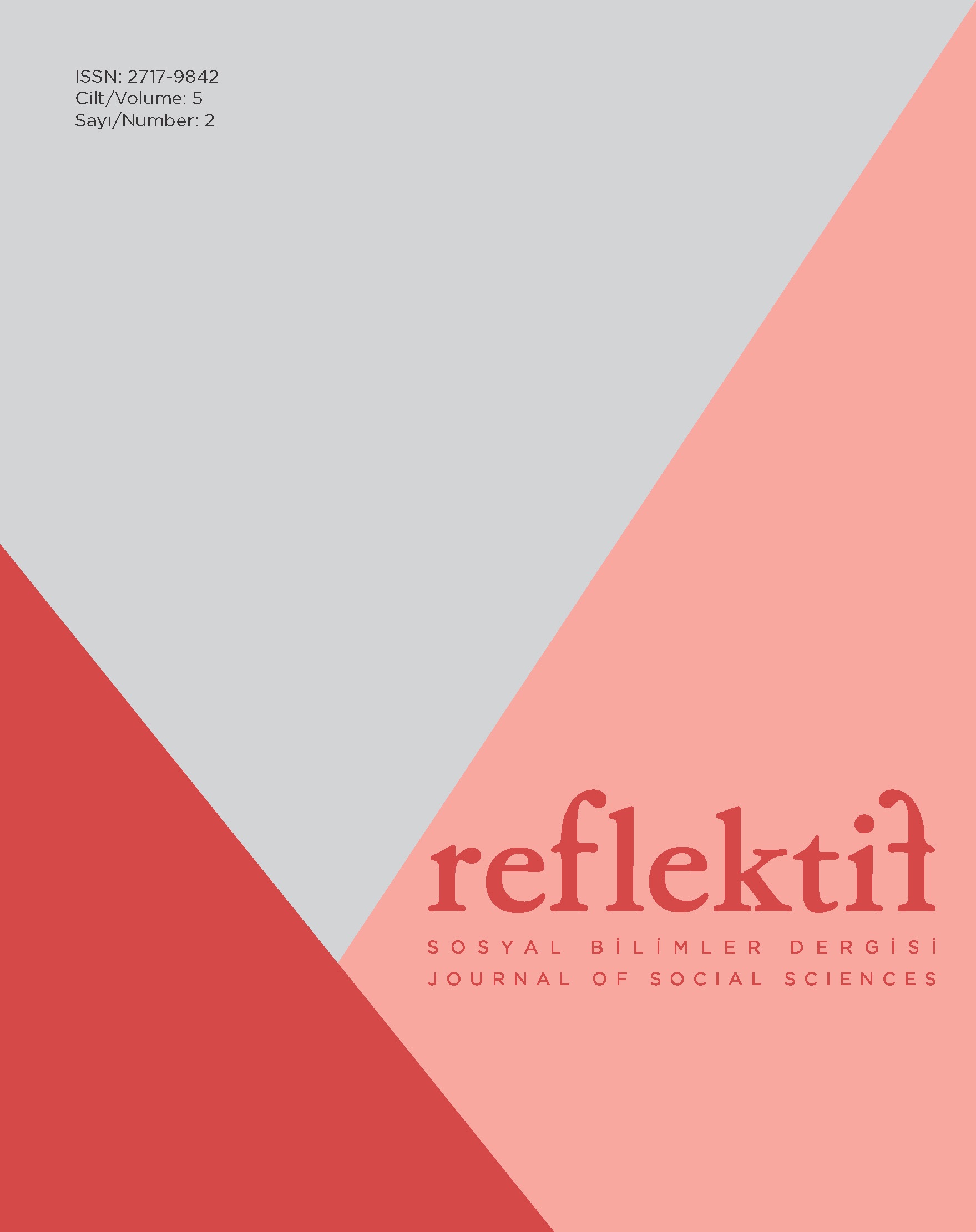Yaşamın Kıyısında Türler Arası Eşiktelik: Hanım’da (1989) İnsan-Hayvan Yoldaşlığı
DOI:
https://doi.org/10.47613/reflektif.2024.161Anahtar Kelimeler:
hayvan çalışmaları, yaşam sonu, türler arası, eşiktelik, yoldaş hayvanÖzet
Bu makale, eşikteliği türler arası müşterek bir deneyim ve insan-hayvan bağının kurucu bir unsuru olarak ele almaktadır. Hayvan çalışmaları için barındırdığı potansiyele rağmen, türler arası eşiktelik üzerine yapılmış araştırmalar görece azdır. Bu çalışmanın amacı alanyazındaki bu eksiklikten hareketle Halit Refiğ’in Hanım [Madame] (1989) filmindeki insan ve kedi kahramanların eşiktelik deneyimlerini, temellendirilmiş kuramın kodlama ilkelerini benimseyen incelemesi aracılığıyla araştırmaktır. Filmdeki insan ve kedi baş karakterlerin eşiktelik deneyimleri bu karakterlerin yaşamlarındaki geçişlerle yakından ilişkilidir. Film, Olcay karakteri üzerinden yaşam ve ölüm arasındaki eşiği temsil ederken, Hanım karakteri ile hayvan öznenin kişi-nesne arasındaki belirsiz ve akışkan konumunu ve bununla ilişkili mekânsal aidiyetsizliği resmeder. Araştırma bulguları, eşiktelik yaklaşımının liminal hayvan yerleşimciler gibi hayvan popülasyonlarını tanımlamaya ek olarak, tekil hayvanların yaşamlarını anlamak ve türler arası yoldaşlık ve birlikte hayatta kalma potansiyellerini açığa çıkarmak için kullanılabileceğine işaret etmektedir.
İndir
Yayınlanmış
Nasıl Atıf Yapılır
Sayı
Bölüm
Lisans
Telif Hakkı (c) 2024 Burak Taşdizen

Bu çalışma Creative Commons Attribution-ShareAlike 4.0 International License ile lisanslanmıştır.
REFLEKTİF Sosyal Bilimler Dergisi'ne yayımlanması için değerlendirilmek üzere gönderilen makaleler, daha önce herhangi bir ortamda yayınlanmamış veya herhangi bir yayın ortamına yayınlanmak üzere gönderilmemiş olmalıdır.
Makalelerin yayıma kabul edilmesi durumunda ticari amaç da dahil olmak üzere ve aynı lisansı kullanılmak şartıyla, çalışmanın başka çalışmalarla birleştirilmesi, çalışmanın üzerine yeni bir çalışma yapılması ya da farklı düzenlemeler yapılmasına izin verilir.
REFLEKTİF Sosyal Bilimler Dergisi'nde yayınlanan çalışmaların telif hakları yazarına aittir. Yazarlar çalışmalarını çoğaltmak ve yaymakta özgürdür.







